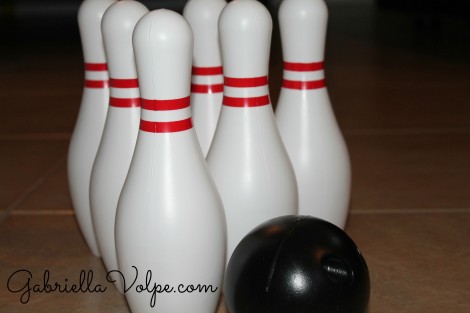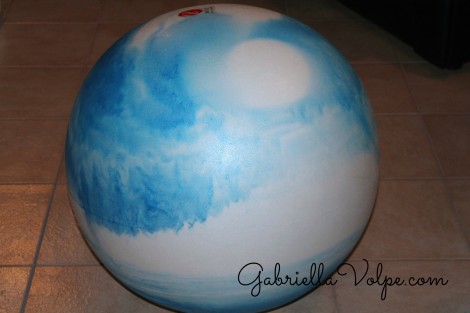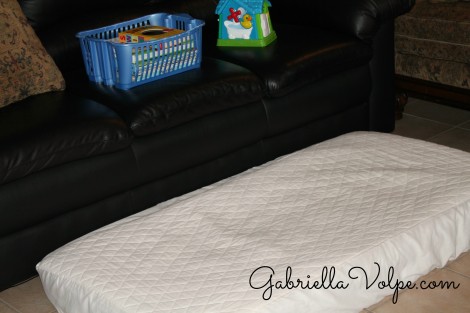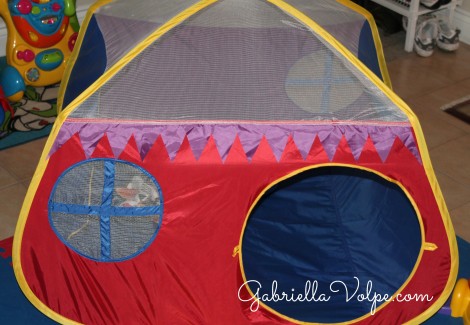This article is part of the 31 Days of Pinterest Hacks series. Find the main page for this series here.
Jumping, running, skipping, tossing, dancing, bouncing, balancing, and rolling. These are all activities that children are expected to do by the time they’re school-age. With the inspirations for movement found on Pinterest, an adult working with a neurodivergent or disabled child may wonder how to include physical activities.

Hop-scotch, ballet, bouncing a ball. You can find tips for these activities and more on Pinterest.
A word about movement
While I’m not a physical therapist, I think I have a pretty good handle on my son’s physical needs. I can anticipate his loss of balance at precisely the time he leans on his left foot. I can tell by the way he gives in at the knees that he wants to sit, then “crawl” to get what he wants. I can read his movements and support him in the best way I know how because I read his body language. This is why I feel confident in what I’m doing with him.
I advise you to speak with the child’s physical therapist before engaging in any of the activities suggested below. This article illustrates that a child does not have to be limited just because they have physical disabilities. Don’t try anything here without approval from the child’s specialist first.
Why movement activities may be a challenge for neurodivergent and disabled children
- Children with physical disabilities may not stand nor grasp objects well enough to engage in movement activities.
- Children requiring support with eye-hand coordination may find catching objects to be difficult.
Suggestions for adaptations/modifications for movement activities
- Read the latest physical therapy report. Work with the child’s therapist’s recommendations first. What’s the next skill you’re working on? How did the PT suggest the child get there?
- Ball-play. A very common childhood toy is a ball. I like to have my son engage in ball-play as it’s versatile but also something he may easily find when we visit a friend. Introduce ball-play with a balloon as it’s light, and the child doesn’t need to catch it, but punch or push it up into the air. Add a verbal routine, “1-2-3 Push the ball!” (And, then, praise when they touch it, “YAH!”) Eventually work with other types of balls, including balls of different textures and sizes. Work on rolling as well as tossing the ball. Then, work up to rolling the ball to knock over other objects.

These bowling pins are light-weight and easy to knock down. The ball has indentations for easy grasping.
- Bean-bags. Like a ball, bean bags don’t require a child to be standing or walking to play with them. A child can toss (underhand), throw (overhand), and change from hand to hand. It’s also fun to place the bean bag on different parts of their body like the head, elbow, back, shoulders, tummy, etc. (with consent) while naming the body parts.
- Big, big ball. In our home, I call the large exercise balls the “big, big ball.” They are easy to find and allow for much movement and balance activities. A child can sit on it, lay on their back or front side. You can sit on it and place the child on your lap (if small enough, and always with consent) and “Bounce, bounce, bounce” or sway, “Side-to-side, side-to-side.” You can also rotate your hips in a circular motion to go “Round and round.”

Our “big, big ball.” These exercise balls come in a variety of sizes.
- Mat-play. Our physical therapist suggested this tip when I asked her what we could do with our baby crib mattress. It seemed like a shame to toss it out when it was still new. She suggested using it in front of a couch for kneeling activities. The adult can kneel behind the child (with consent) and play with toys on the couch. I love this because my son cannot kneel on his own, and this makes for an easy spot to get him into that position in seconds. We also just lay down on it and read.

Crib mattress propped up against a couch for kneeling-play.
- Tents and tunnels. We love tents and tunnels for physical activity because it gets my son working to get into and out of places. He doesn’t just spontaneously go in there himself. We place his favorite toys in them to motivate him to “crawl” in. Lay some pillows, get into the tunnel and tents together (you’ll fit – I tried), and do something special like reading. Only do this if the child feels safe.

This tent has two entrances. I like to pop my head in on one end while calling my little guy to come through the other. It doesn’t always work, but I have a lot of fun myself.

This tunnel ties to the tent pictured above, or it can be used on its own. I suggest separating it at first so that the child works on one thing at a time (plus, they can see the other end better when it’s detached).
- Ribbon-dance. Playing with a ribbon rod can be a lot of fun. It’s a simple toy that helps work the shoulder muscles. Play music and have the child sway the ribbon to the tempo of the music. Twirl it, swirl it, zig-zag it, and circle it. So many new verbal routines come from this one little magical wand.

Great for hand and arm exercises. You can make one yourself with a branch and long ribbon.
- Obstacle course. Even if the child isn’t walking, you can create a mini-obstacle course inside or outdoors. Place a few of the child’s favorite toys in different parts of the space where the child can easily see and grab them. For instance, on a chair, on a table, on a step, on a counter, etc. Guide the child around to pick-up each of the toys. My son is able to walk with much support, so I use the obstacle course as a motivator to get him to walk from one space to another. If the child needs to be moved around in a wheelchair, do it, but let them reach for the objects if they can, or have them tell you to get them yourself. Celebrate each achievement.
Do you have some movement activities to share?
Related Articles:

I have to admit that when I read the title of this entry, I had only a little ray of hope that something here would apply to my son. After all, it’s a post about movement activities and my son struggles with moving.
However, I’m SO glad that I did read it because it is full of great suggestions that I can use as is or adapt. Love the crib mattress tip! We are working on kneeling and use folded blankets on the floor, but they get a little lumpy.
Thanks for a useful post!
Once again, Catherine, I hear you loud and clear. Because there is a vast variety of abilities in the children of readers here, I wanted to take the angle of those with the most need for assistance in movement. Otherwise, one could take any of the movement activities found on Pinterest and apply those, right? But, for children like yours and mine, Catherine, I was trying to give the very basic (without a physical therapist’s input), of what could be done in the home to mix things up a little.
However, I realize today, that I probably forgot to add two of the most important tips: Dance and massage.
What better way to connect with others than through music and dance? For a child who doesn’t walk yet, the parent can support the child in waving/ swaying the arms to the beat of various types of music. I do this so often with my little guy, I don’t know how I even for got that one. We sway fast, we sway slow, we sway left we sway right, up, down and around. We sway the arms up and down alternatively, and then criss-cross alternatively as well. It’s just so much fun for both the child and the parent. If you can, you can also gently move your child’s legs to the beat of the music in a similar way. It’s great to get your child used to this so that when you’re at an event with other people, you can say, “Dance” and he’ll know exactly what to expect.
And, then, for massage… again, always under the advice of a therapist, you can massage the arms and legs and back ever so gently both at the beginning of the movement session and at the end.
I carefully chose the word “movement” rather than “physical therapy” or “physical education” because movement allows the parent to envision the possibilities. And, there are many.
All the best and let me know how it goes with the mattress. I know that it’s not as solid as other mats, but it’s very kind to the knees. It also doubles as a crash pad when you’re both completely exhausted at the end of the activity. I speak from experience!